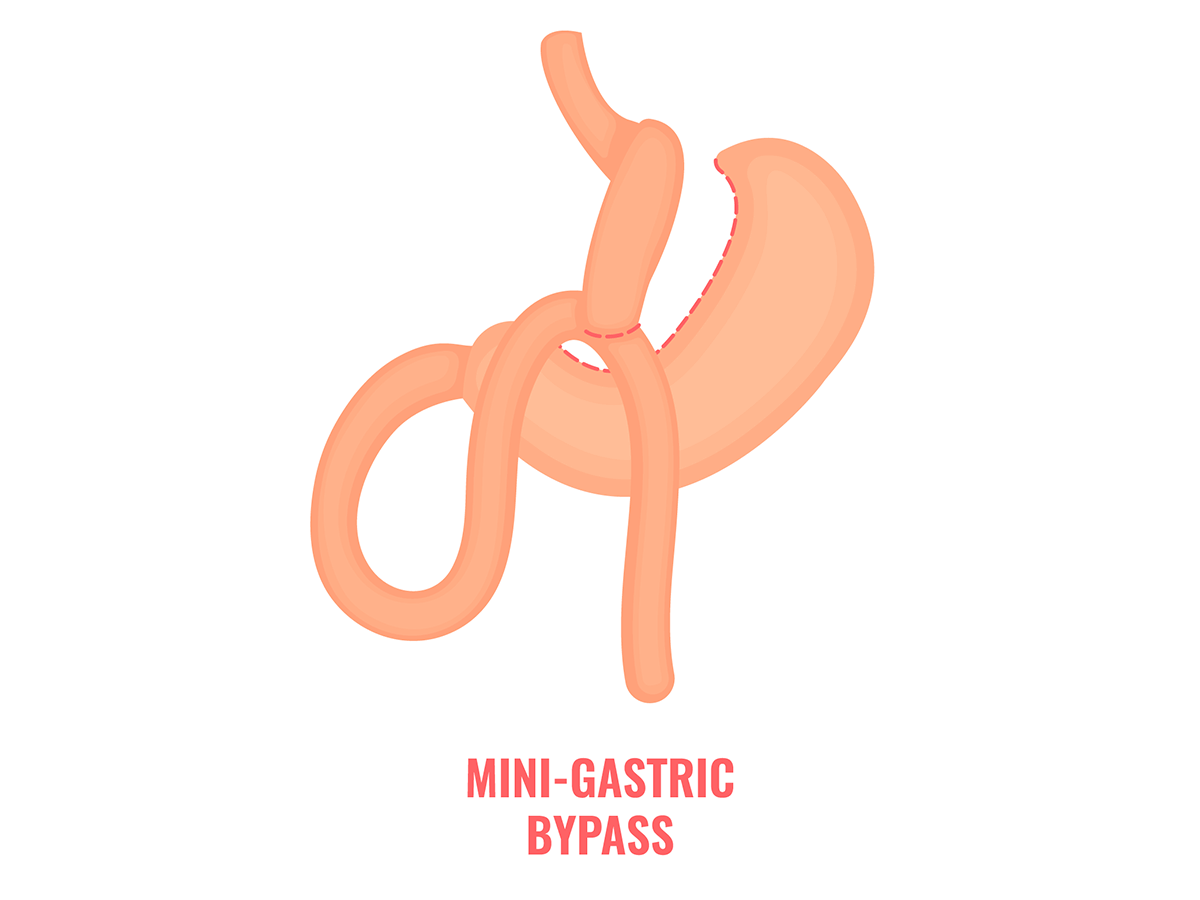- +52 664 761 5349
- contact@tijuanasurgery.com
- Paseo de los Héroes 9211 Edificio Xtal Zona Rio Tijuana BC México 22010

One-anastomosis gastric bypass (OAGB), also known as “mini-gastric bypass” was first reported in 2001. OAGB is a minimally invasive procedure performed laparoscopically, in which the surgeon first reduces the size of the “functional” stomach by separating a tube-shaped pouch from the rest of the stomach. This tubular gastric pouch is then connected (anastomosed) to the intestine, reducing up to 200 cm of the upper intestine. This technique is different from the traditional Roux-en-Y bypass (RYGB) which requires two connections (anastomoses).
An OAGB usually produces a 30% to 40% body weight loss from the start (and a 60-80% excess weight loss). The most rapid weight loss occurs in the first 6 months after surgery and then continues at a slower rate for another 18 months. This is achieved through both restriction (the new gastric pouch can hold only a small amount of food) and malabsorption. What leads to malabsorption is that after bypassing a considerable segment of the intestine, the remaining intestine is not long enough for normal absorption of nutrients.
Weight loss can lead to dramatic improvement and even complete remission of many of the complications related to obesity.
Long-term data show that an OAGB generally produces better weight loss and a higher diabetes resolution rate than a RYGB.
OAGB has few long-term complications, less than 5% of patients may require revision surgery, in which half are due to severe malnutrition and half due to biliary reflux, ulcer and/or weight regain.
The advantage of OAGB is that it is relatively simple compared to RY gastric bypass. It has a shorter operative time and fewer operative complications. In the long term, it results in fewer intestinal obstruction problems and less risk of internal hernia.

If you are seeking surgery or have health concerns, schedule an appointment here to receive medical care appropriate to your condition.

Contact information
Copyrights ©2022 – Tijuana Surgery Center